The only solution traffic congestion in Santa Monica is...
Let's face it. Only if the traffic tangle gets immeasurably worse than it is already
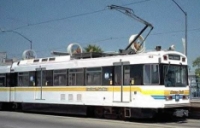 will we get light rail. And only when we Santa Monicans cease going to our own downtown altogether, because it's just too damn hard, will we be offered other ameliorations like minicabs, pedaltaxis, and Tide-sized buses to all parts of town.
will we get light rail. And only when we Santa Monicans cease going to our own downtown altogether, because it's just too damn hard, will we be offered other ameliorations like minicabs, pedaltaxis, and Tide-sized buses to all parts of town. If you favor the development of a rational public transportation system, you've got to look on gridlock as your ally and friend.
Planning and development and even growth are not the enemy, by the way. The enemies of the good life in Santa Monica are bad and wasteful planning, mediocre development, and growth that is unaccompanied by the planned and managed creation of a workable infrastructure.
Growth is going to come. The only question is how we will manage it for the better.
If you are a progressive, you probably favor development: development means jobs, it means housing, it means improved infrastructure, it means public transportation.
And if you are concerned about the environment, then you must have realized that the on
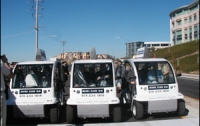 ly solution to urban sprawl, to the loss of farmland, recreational opportunities, plant and animal diversity, water resources, and so on, resides in encouraging the creation of much denser urban environments. And you have to ask yourself where in Southern California the concentration of development should occur if not in the zone that puts the least drain on the infrastructure and the environment by needing neither air-conditioning in the summer nor much in the way of heating in the winter. There is also a huge benefit to having a large population within a short hop to the beach.
ly solution to urban sprawl, to the loss of farmland, recreational opportunities, plant and animal diversity, water resources, and so on, resides in encouraging the creation of much denser urban environments. And you have to ask yourself where in Southern California the concentration of development should occur if not in the zone that puts the least drain on the infrastructure and the environment by needing neither air-conditioning in the summer nor much in the way of heating in the winter. There is also a huge benefit to having a large population within a short hop to the beach.In Santa Monica, a successful future can be expressed in a simple two-part formula: Develop the commercial areas! Protect the neighborhoods!
This means allowing new construction of mixed-use housing and commercial developments along the commercial streets, while doing everything possible to protect the character and density of the purely residential neighborhoods.
In the meantime, while we wait for the traffic grind to a halt, there are many
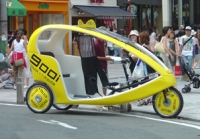 alternatives to automobiles for getting around our little (3 mile x 3 mile) town. Those who are are neither lame nor lazy can easily walk from our neighborhoods to downtown or to other parts of the city. Although City Hall has pursued traffic policies over the past decade that have made it increasingly dangerous to ride, the climate and the basically flat topography make Santa Monica almost ideal for commuting by bicycle (and, while it is true that riding safely here requires great alertness, it is equally true that as more of us do it, the safer it will become). Why is it left to a city like Long Beach to pioneer a downtown bicycle valet service while Santa Monica relies on bike lanes to nowhere and ridiculous "Share the Road" signs?
alternatives to automobiles for getting around our little (3 mile x 3 mile) town. Those who are are neither lame nor lazy can easily walk from our neighborhoods to downtown or to other parts of the city. Although City Hall has pursued traffic policies over the past decade that have made it increasingly dangerous to ride, the climate and the basically flat topography make Santa Monica almost ideal for commuting by bicycle (and, while it is true that riding safely here requires great alertness, it is equally true that as more of us do it, the safer it will become). Why is it left to a city like Long Beach to pioneer a downtown bicycle valet service while Santa Monica relies on bike lanes to nowhere and ridiculous "Share the Road" signs?Finally, we are lucky in having a relatively efficient and inexpensive bus system. The Big Blue Bus is cheap, clean, and safe (at least for people on the bus), and with innovations like the Tide shuttle linking the major hotels to downtown and Ocean Park and the new express bus to LAX, Santa Monica's bus company has demonstrated a willingness to think outside the lane. And Metro's red express buses connect Santa Monicans to a growing county-wide transportation system.
See Travel: ExperienceLA.com
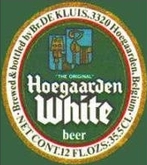 In the 1960s, a local milkman named Pieter Celis, about whom more in a moment, revived a traditional brewing style of the region that ordinarily combined equal portions of raw wheat and malted barley (sometimes with an admixture of oats), spiced it up with dried Curaçao orange peels and ground coriander seeds and -- something else…what? cumin, maybe -- and then fermented the lot with a conventional yeast.
In the 1960s, a local milkman named Pieter Celis, about whom more in a moment, revived a traditional brewing style of the region that ordinarily combined equal portions of raw wheat and malted barley (sometimes with an admixture of oats), spiced it up with dried Curaçao orange peels and ground coriander seeds and -- something else…what? cumin, maybe -- and then fermented the lot with a conventional yeast.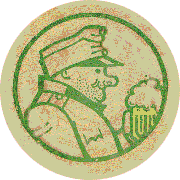 dominates, but the coriander and citrus, often pursued by a mild phenolic aroma, contribute to a complex, elegant, nearly winy disposition. Heady, virtually Bazooka-level sweetness, bestowed by the cereal grass, frequently with plum, apple or banana appoggiaturas, is nicely undercut by the piquant orange and herb colorations – you'll think you're catching intimations of cinnamon, cloves, pepper and nutmeg -- and by a faintly astringent dryness. That trailing nose is bright and highly fruity, with a pleasing hint of muskiness. Behind it all, a muted and nectarious bitterness, reminiscent of the absent hops, is probably contributed by the amaroidal orange peel.
dominates, but the coriander and citrus, often pursued by a mild phenolic aroma, contribute to a complex, elegant, nearly winy disposition. Heady, virtually Bazooka-level sweetness, bestowed by the cereal grass, frequently with plum, apple or banana appoggiaturas, is nicely undercut by the piquant orange and herb colorations – you'll think you're catching intimations of cinnamon, cloves, pepper and nutmeg -- and by a faintly astringent dryness. That trailing nose is bright and highly fruity, with a pleasing hint of muskiness. Behind it all, a muted and nectarious bitterness, reminiscent of the absent hops, is probably contributed by the amaroidal orange peel.







